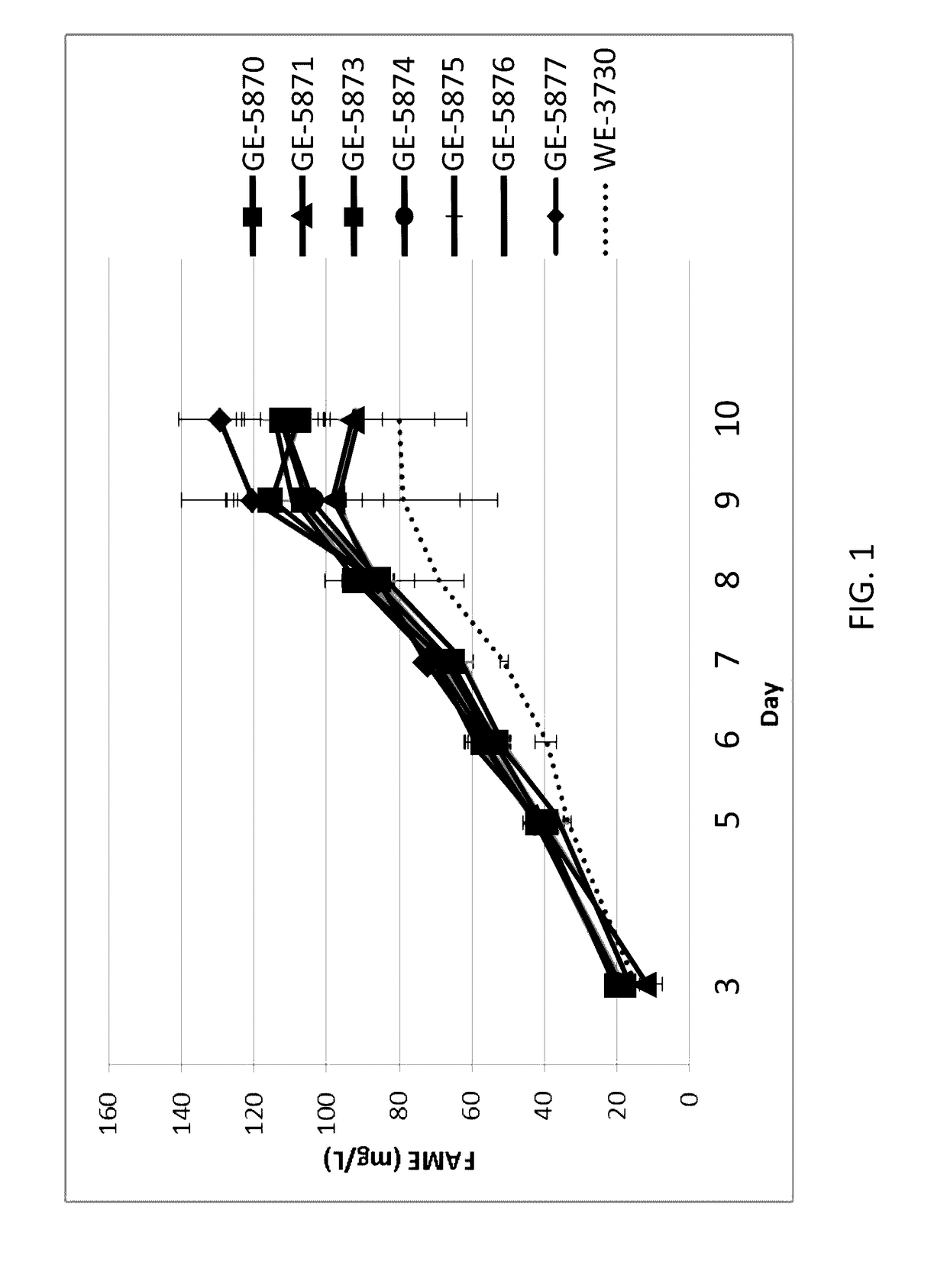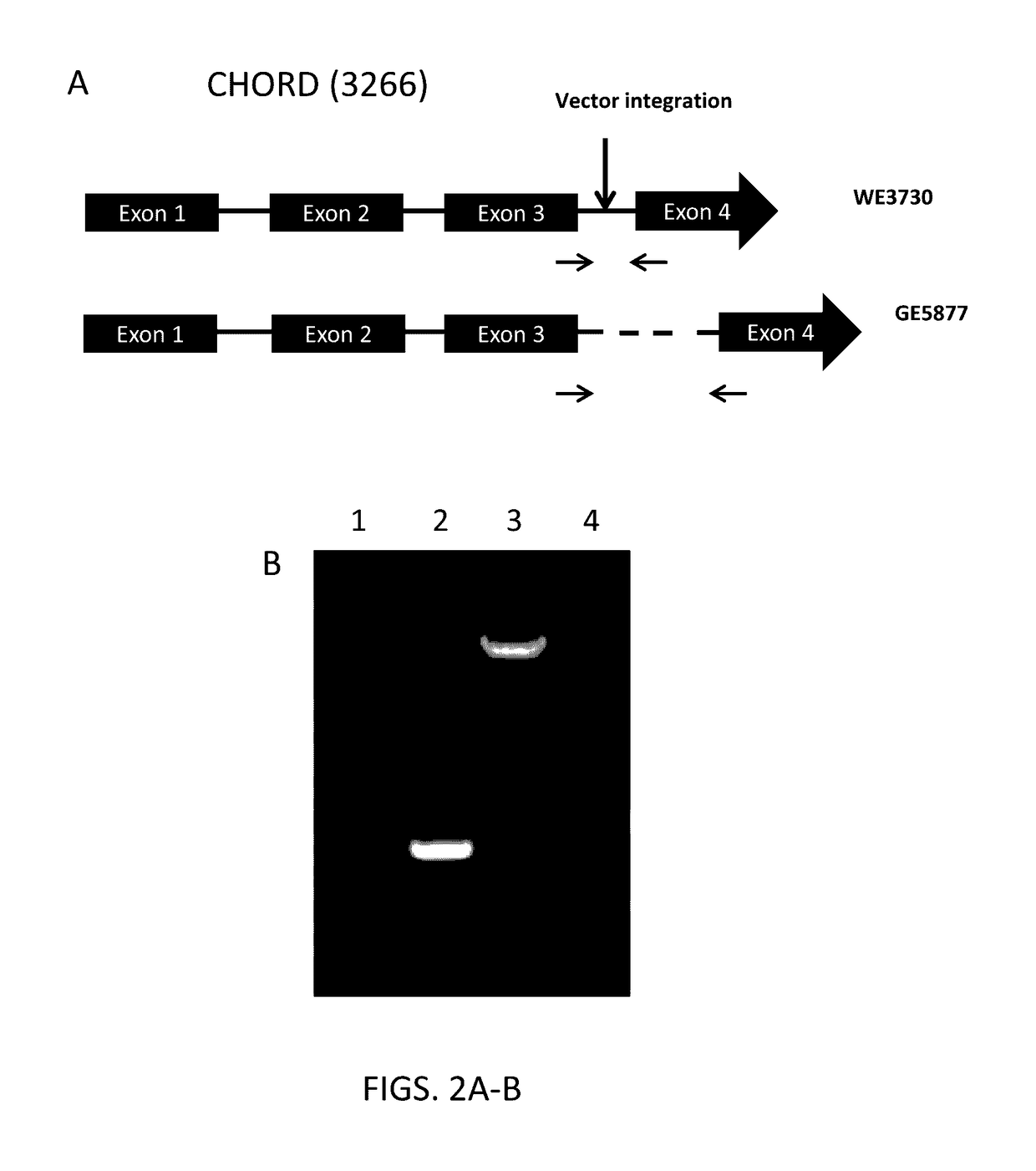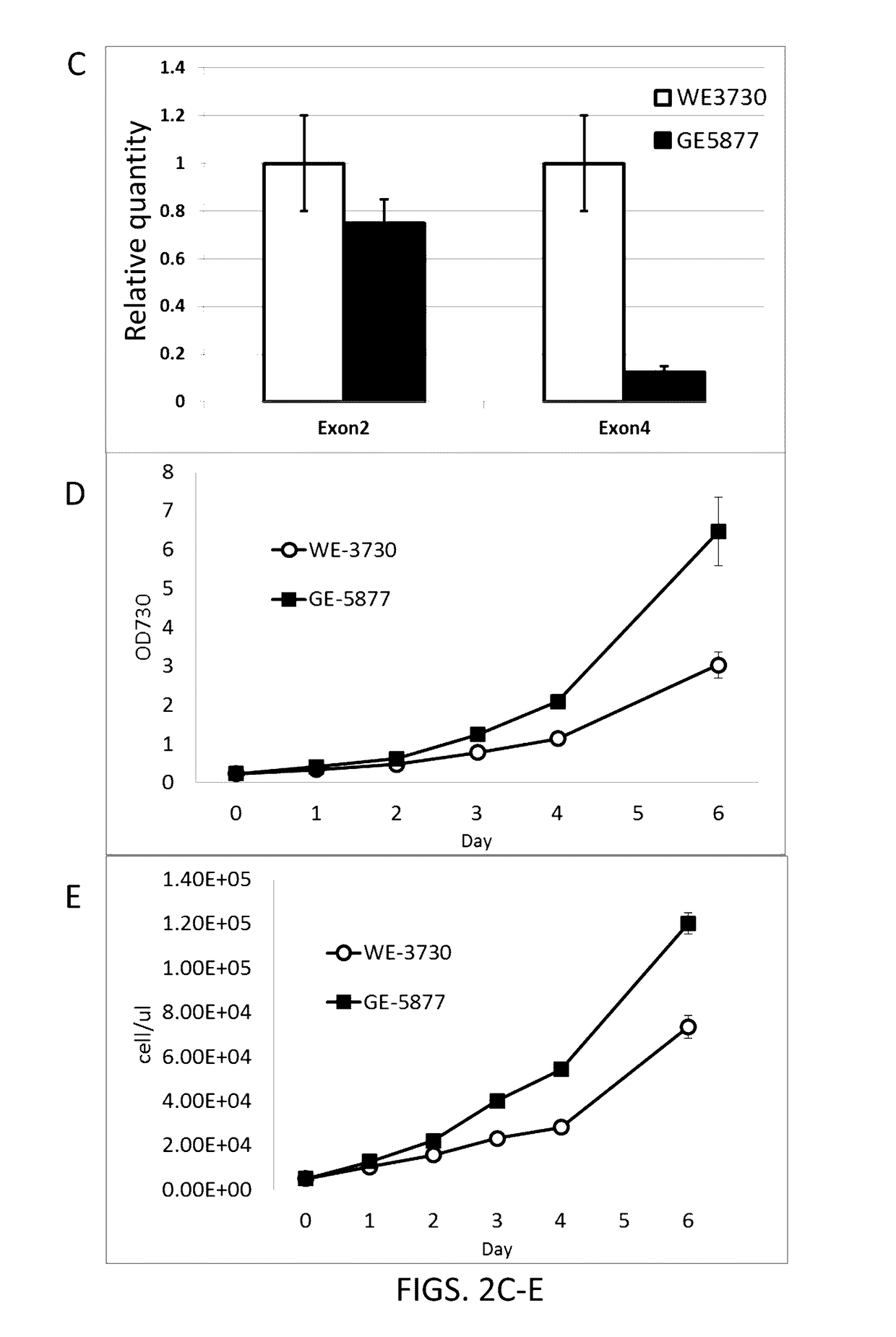Microorganisms engineered for increased productivity
a technology of microorganisms and productivity, applied in the field of molecular biology and genetics, can solve the problems of low biomass yield and contribute to the relatively high cost of algal biofuels and other products, and achieve the effects of increasing the productivity of microorganisms, enhancing proliferation, and increasing biomass accumulation
- Summary
- Abstract
- Description
- Claims
- Application Information
AI Technical Summary
Benefits of technology
Problems solved by technology
Method used
Image
Examples
example 1
Insertional Mutagenesis of Nannochloropsis Gaditana
[0230]A wild type Nannochloropsis gaditana strain, WT-3730, which is a subcultured isolate of the N. gaditana strain CCMP1894, obtained from the Provasoli-Guillard National Center for Marine Algae and Microbiota (NCMA, Maine, U.S.A.), formerly the Culture Collection of Marine Phytoplankton (CCMP), was used as a wild type background for insertional mutagenesis and genetic manipulation. A construct that included a resistance gene was transformed into Nannochloropsis gaditana cells. The construct (SEQ ID NO:57) included the Aspergillus blasticidin resistance gene codon-optimized for Nannochloropsis expression (SEQ ID NO:98), operably linked to the Nannochloropsis TCTP promoter (SEQ ID NO:97) as described in U.S. Patent Publication No. 20140220638, filed Dec. 6, 2013, incorporated herein by reference in its entirety. Nannochloropsis gaditana cells were transformed by electroporation essentially as described in U.S. Patent Publication N...
example 2
Screen and Isolation of Increased Lipid Mutants
[0231]Initially, random insertion tagged libraries of transformed Nannochloropsis were screened for increased lipid content using fluorescence activated cell sorting (FACS) techniques coupled with a fluorescent neutral lipid specific dye, BODIPY 505 / 515 (Life Technologies). Antibiotic resistant colonies appearing on transformation plates were resuspended into liquid culture and acclimated to low light intensities, stained with BODIPY, and sorted by flow cytometry using a BD FACSAria II flow cytometer (BD Biosciences, San Jose, Calif.) such that high BOPDIPY fluorescence cells were selected. BODIPY staining was performed by treating 1 ml of cells with a final concentration of 12.5% glycerol and 0.1 ug / ml BODIPY. In general, approximately 0.5 to 2% of the total population of cells was selected as having the highest BODIPY fluorescence from this first screening procedure. In some instances, two successive rounds of sorting based on increas...
example 3
Lipid Productivity Assessment of Clones Having Increased Lipid Production
[0235]Seven high lipid producing isolates were assessed in a batch growth assay to test lipid productivities. In this assay, triplicate 225 cm2 flasks for each strain were inoculated with algae to provide a culture density of 0.15 OD 730 nm in a total volume of 500 mL of PM066 medium that includes 8.8 mM nitrate as the nitrogen source. Stir bars were added to each flask, and stoppers having a syringe filter for air / CO2 delivery at a rate of 100 ml / min and a clave connector for sampling were fitted to the flasks, which were given random positions along the 16-flask rack. The stir plates beneath the rack were operated at 450 rpm. The LED light bank provided a 16:8 light regime designed to provide 1800 μE·m-2·s-1 for 16 hours, followed by 8 hours of darkness. The temperature varied from 25° C. to 34° C. Samples (typically 2 mLs) were removed on days 3, 5, 6, 7, 8, 9, and 10 for TOC and FAME analysis. After Day 5, ...
PUM
| Property | Measurement | Unit |
|---|---|---|
| time | aaaaa | aaaaa |
| time | aaaaa | aaaaa |
| time | aaaaa | aaaaa |
Abstract
Description
Claims
Application Information
 Login to View More
Login to View More - R&D
- Intellectual Property
- Life Sciences
- Materials
- Tech Scout
- Unparalleled Data Quality
- Higher Quality Content
- 60% Fewer Hallucinations
Browse by: Latest US Patents, China's latest patents, Technical Efficacy Thesaurus, Application Domain, Technology Topic, Popular Technical Reports.
© 2025 PatSnap. All rights reserved.Legal|Privacy policy|Modern Slavery Act Transparency Statement|Sitemap|About US| Contact US: help@patsnap.com



